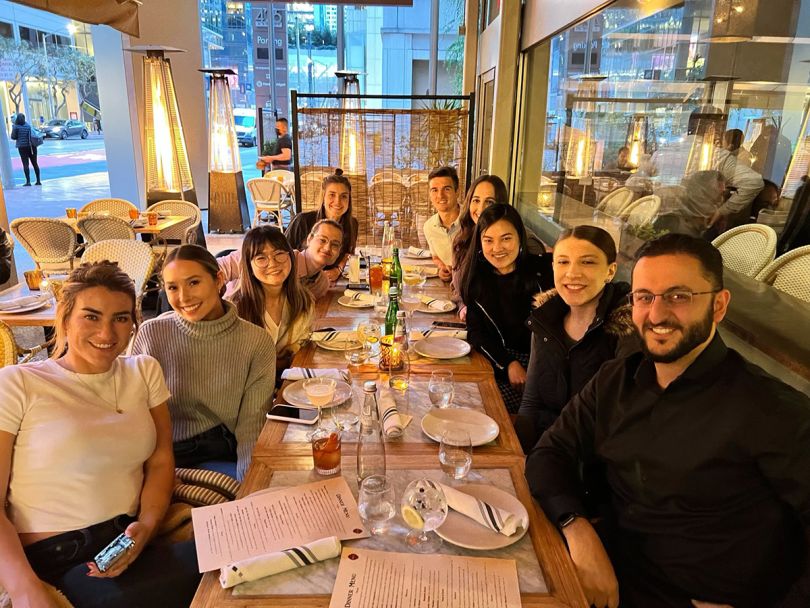Wine has coursed throughout the streams of human history. From the underground grape juice of the Early Georgians and the Dionysian barrels of the Roman Empire to the proud chateaux of Bordeaux and the grocery store aisles of suburban America, the ancient liquid has become a staple of modern gastronomy.
Today, a wine pairing at a fine dining establishment or an à la carte nightcap commands almost the same price tag as the meal itself. The premium upgrade uncorks revenue streams for the profit margins of a restaurant and can be a good value proposition for both patron and establishment with the proper upsell strategy. But it falls on the sommelier to pair the cover with the right bottle.
For account management and customer success reps, upselling can also require a sommelier approach: Every client is as distinct as a table of guests, with no one-size-fits-all template. Broad strategies are informed by specific circumstances — every diner a different palate, budget and need. “The key to a successful upsell strategy is a deep understanding of the account’s overall health,” said Amy Rice, director of renewals at CodeSignal.
Upselling unlocks additional value for the client, but is often dependent on the use case of the specific account and its financial health. While revenue is an important metric, brute forcing sales of more premium offerings might not translate to long-term gains. Successful CSMs and account managers position upsells by forecasting the clients’ needs and whether they are optimizing the current product usage.
As companies adapt their sales strategies around personalized, authentic finesse, omnichannel client choice has become a popular pairing with a holistic approach to upsells. Two-thirds of B2B buyers — in a post-pandemic survey by McKinsey — said they prefer remote human interactions or digital self-service instead of traditional sales methods. “The strategy is to plant seeds of what could be, and then start speaking to the value of the upsell opportunity in passing conversations,” said Side’s SVP of Sales Bryan Smith.
The seeds, planted as a new account, are nurtured with discussions of growth and options personalized to each client’s needs. To get a closer look at how tech companies leverage this seed-to-table strategy in upselling, Built In SF sat down with two tech sommeliers to hear their advice on pairing products with clients.

CodeSignal is a technical interview solution that helps companies hire qualified talent. As recruiting is an integral part of any business operation, the company’s platform aims for a better assessment process for both employers and their candidates, while reducing bias and engineering time. As a B2B company, CodeSignal relies on maintaining strong relationships with its business clients. When asked about her strategy, Director of Renewals Amy Rice stressed the importance of not making assumptions and ensuring that the customer’s account is healthy before positioning an upsell.
What’s one strategy you’ve found to be particularly successful when upselling an existing customer?
I partner closely with the client’s sales manager and customer success manager (CSM) to make sure I understand how my customers are using our products and where they see value before considering growth.
I then position myself as a trusted advisor by educating clients on new or underutilized features that could help them meet their business goals. I partner with the account’s SM and CSM to do a business review, pull data on the client’s current usage and determine a plan to maximize outcomes by adding features.
Avoid making assumptions, and make sure you understand the health of the account before trying to position an upsell.”
We recently introduced a new product, Tech Screen, to a client. The day before the meeting, the client had a round of layoffs, forcing us to reconsider their needs. The newly downsized team meant the client needed, counterintuitively, more help with interviewing, and were in a more favorable position to increase their contract size. Tech Screen allowed the client to provide their candidates a white glove experience, minimize drop-off and reduce internal engineering resources dedicated to interviewing. The contract size was increased, and we established ongoing conversations about the product.
When trying to upsell a B2B customer, what’s one approach customer success reps or account managers should actively avoid?
Avoid making assumptions, and make sure you understand the health of the account before trying to position an upsell. If you try to do it when the client has unaddressed issues with their current offering, your chances of success are low. It’s important to first ensure your clients have an optimal implementation of what they’ve already paid for. You don’t want to risk losing the relationship you’ve built, or giving the impression that you don’t care about clients’ current process. Make sure you meet with your CSMs regularly before a renewal, increase of price or effort to upsell a client on new technology.
Side is a real estate brokerage company with a focus on agent partnerships. Working with agents to establish their own businesses, the company’s B2B model is reliant on robust collaboration with clients in order to handle implementations on their behalf. For SVP of Sales Bryan Smith, the platform only works if both sides contribute to the value of the relationship. “The idea is to make the upsell feel almost like a reward that the customer has earned,” he said of his sales philosophy.
What’s one strategy you’ve found to be particularly successful when upselling an existing customer?
A good account executive will plan ahead. Understand where your value-add upsell opportunities are within your book of business. The objective is to build the upsell up as something that has to be earned: adoption metrics, licensing quotas, satisfaction ratings and more. Then, you build anticipation through showing evidence of value with case studies and testimonials. The idea is to make the upsell feel almost like a reward that the customer has earned. That is the most powerful way to sell — them asking you for the business.
For example, in our monthly calls we always mentioned where we could go to add more value, but reminded the customer that we wouldn’t be able to take advantage of the added value opportunity until they had internal adoption of over 70 percent. Once we crossed that line, we could then talk about maturing the relationship and putting them in a position to get more value out of the relationship.
When trying to upsell a B2B customer, what’s one approach customer success reps or account managers should actively avoid?
Avoid springing an upsell opportunity on a customer at the end of a month or quarter, where the only strategy the account manager can lean on is selling on price, at a discount because the value and nurturing have not been sufficiently planted. It comes across as disingenuous, desperate and self-serving.
That is the most powerful way to sell — them asking you for the business.”
What’s a key difference between B2B upselling methods and those traditionally used to upsell customers in a B2C business? How have you pivoted your approach since making the switch?
B2B conversations are all about selling to the things that business decision makers need to hear and believe, such as productivity gains, scale and growth. B2C is more about selling to a better state of being, where emotions feel good about the decision.









